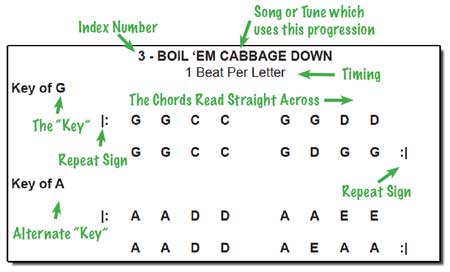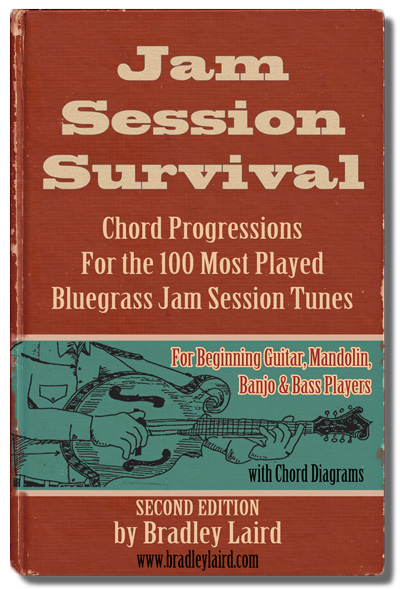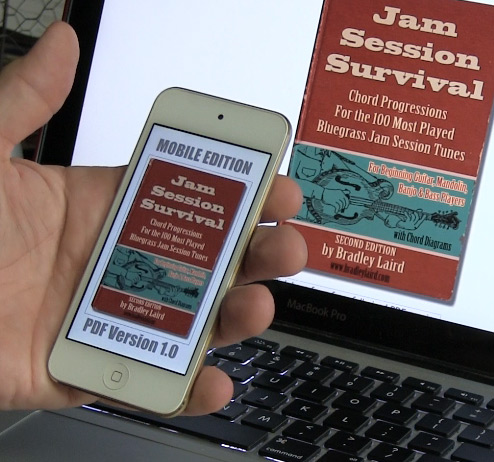|
HOME | LIST OF JAM SESSION CHORD PROGRESSIONS | FREE GUITAR CHORD CHARTS FREE MANDOLIN CHORD CHARTS | FREE BANJO CHORD CHARTS |
|||||
|
FREE BANJO LESSONS Bradley Laird's Free Bluegrass Banjo Lesson site is here! FREE CLAWHAMMER BANJO LESSONS Bradley Laird's Free Clawhammer Lesson site is located here! FREE MANDOLIN LESSONS Bradley Laird's Free Mandolin Lesson site is located here! FREE GUITAR LESSONS Bradley Laird's Free Bluegrass Guitar Lesson site is here!
©2015 Bradley Laird |
FREE
CHORD PROGRESSIONS - by Bradley Laird
Instructions For Using These Free Charts
1. Look up the chord progression for the song you want to play on the index page. You might want to bookmark that page since it lists them all. 2. Under the title of the song you'll see the timing indicated by the words "1 Beat Per Letter" or "2 Beats Per Letter." Some songs have chords which change once per beat (like Blackberry Blossom) and it is easier to read when written as 1 Beat Per Letter. Some songs always stay on a chord for at least 2 beats (like Liberty) and they are easier to read written as “2 Beats Per Letter.”
10. If you are a bluegrass banjo player you would play one off-beat chop chord per beat. If you are rolling you would play 4 picked notes per beat. You could also play one "thumb-pinch" lick. See my free bluegrass banjo lessons for more information. 11. If you are a clawhammer banjo player you would play one "bump-ditty" pattern for each beat. See my free clawhammer banjo lessons for more information.
If you need additional instruction please visit my free lesson sites. The links are on the left column of these pages. Nearly all beginners could gain some valuable insights by taking a look at this free lesson on chord progressions.
Back to Index of Chord Progressions
Follow Me
| ||||





